Keeping Children Safe in Education Knowledge Check
This online course tests participant knowledge of part one and any relevant annexes of Keeping Children Safe in Education, reinforcing understanding and providing confirmation to DSLs that their staff have read the guidance.
To access this e-learning course for £10+VAT per user, visit our course booking page and view the e-learning section.
To see the range of e-learning we have available, click here.
Requirements for schools
Part 1 of Keeping Children Safe in Education states that governing bodies of maintained schools and proprietors of independent schools should ensure “that those staff who work directly with children read at least Part one of this guidance” and where they do not work directly with children the staff read either part one or annex A. Schools should also ensure that staff are assisted to understand and discharge their role and responsibilities as set out in part one. The guidance also sets out that individuals who work directly with children should also read annex B.
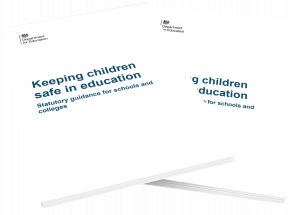
Understanding responsibilities
How do you assist staff to “understand and discharge their role and responsibilities”? At Safeguarding Network we have developed an online knowledge check to help you check your staff not only say they’ve read the guidance, but can evidence they understand it.
Comprising two sections, the knowledge check looks at the formal requirements set out in part one of Keeping Children Safe in Education, then tests users understanding of what this means for the children and young people you work with.
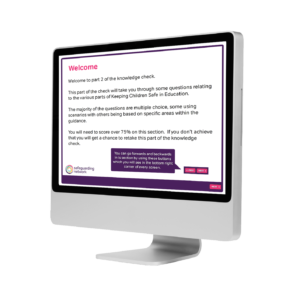
Checking requirements are met
Section one of the check asks staff what role they have in school and then determines which parts of Keeping Children Safe in Education they should read, as well as providing links to the relevant documents. This section also requires staff to record the date that they read part one or annex A and confirm where necessary that they have read any annexes. Finally, there are checks that they have read other required policies and they can identify who their DSL is.
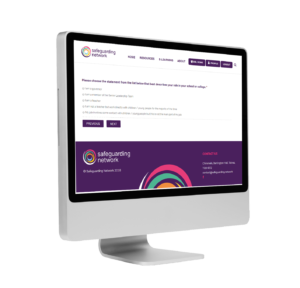
Testing understanding
Section 2 of the knowledge check tests understanding through multiple choice questions and scenarios. Participants must achieve over 75% to pass – you’ll have access to their certificate to evidence this. Feedback is provided for each question, and users who do not pass have the opportunity to take section 2 again.
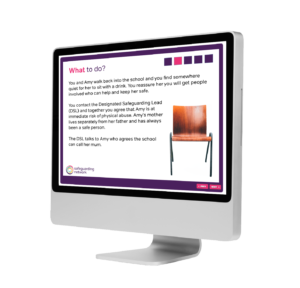
What is covered
We’ve a rather sophisticated system that randomly selects questions within several structured pools of questions so that everyone covers key areas, but people don’t get the same quiz. Click the button to find out more.
For those tested on the whole of part 1, the structured areas (each with a set of questions) are:
Who is responsible for what roles in the setting (e.g., who is responsible for safeguarding, who is responsible for developing the safeguarding policy).
What to do if a child/young person discloses.
Identification of concerns.
What to do if you have a concern about a colleague.
Whistleblowing.
Early help.
Child-on-child abuse.
When to refer to the local authority.
Recording of involvement.
Escalation
FGM.
Those who are tested on Annex A only:
Who is responsible for what roles in the setting (e.g., who is responsible for safeguarding, who is responsible for developing the safeguarding policy).
What to do if a child/young person discloses.
Identification of concerns.
What to do if you have a concern about a colleague.
Whistleblowing.
Each participant will have a question to check their knowledge on each of the above topics, but the actual questions differ.
For those tested on the whole of part 1, the structured areas (each with a set of questions) are:
Who is responsible for what roles in the setting (e.g., who is responsible for safeguarding, who is responsible for developing the safeguarding policy).
What to do if a child/young person discloses.
Identification of concerns.
What to do if you have a concern about a colleague.
Whistleblowing.
Early help.
Child-on-child abuse.
When to refer to the local authority.
Recording of involvement.
Escalation
FGM.
Those who are tested on Annex A only:
Who is responsible for what roles in the setting (e.g., who is responsible for safeguarding, who is responsible for developing the safeguarding policy).
What to do if a child/young person discloses.
Identification of concerns.
What to do if you have a concern about a colleague.
Whistleblowing.
Each participant will have a question to check their knowledge on each of the above topics, but the actual questions differ.
Applying the knowledge
Participants are then given several scenarios that are randomly selected looking at physical abuse, neglect, emotional abuse, sexual abuse, child-on-child abuse and early help. The aim of this section is to test their application of the knowledge they’ve accrued.
Overall, participants need to answer 75% of the questions correctly to pass. Where they get a question wrong they are given pointers to the guidance to re-read the section before trying again. Those who attain the pass mark with the re-attempts receive a certificate and are recorded on the DSL’s report. Those with a lower score can make further attempts until they have passed.
Reporting back
The system has real time reporting on who has completed the check along with the option for the DSL to email staff to ensure they have completed the check. A compliance spreadsheet telling DSLs when individuals have read KCSiE as well as information about which required policies they have read and who their DSL is can be downloaded at any time.
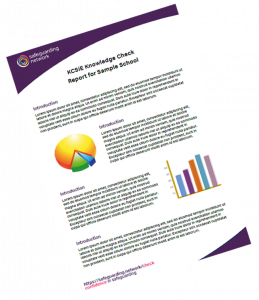
Costs
If your setting subscribes to Safeguarding Network then the knowledge check costs just 99p+VAT per person. The designated safeguarding lead can agree access for staff through the ‘Your Setting‘ page. Membership starts from just £120+VAT a term for the whole setting and includes our Keeping Children Safe in Education audit tool, together with regular in-house training packs for your staff on Keeping Children Safe in Education topics, providing a robust and systematic approach to meet the requirements of the guidance in line with the Ofsted framework. Click here to find out more or join.
If your school does not subscribe to Safeguarding Network the knowledge check costs £10+VAT per user. For access, you can visit our course booking page and view the eLearning section.
